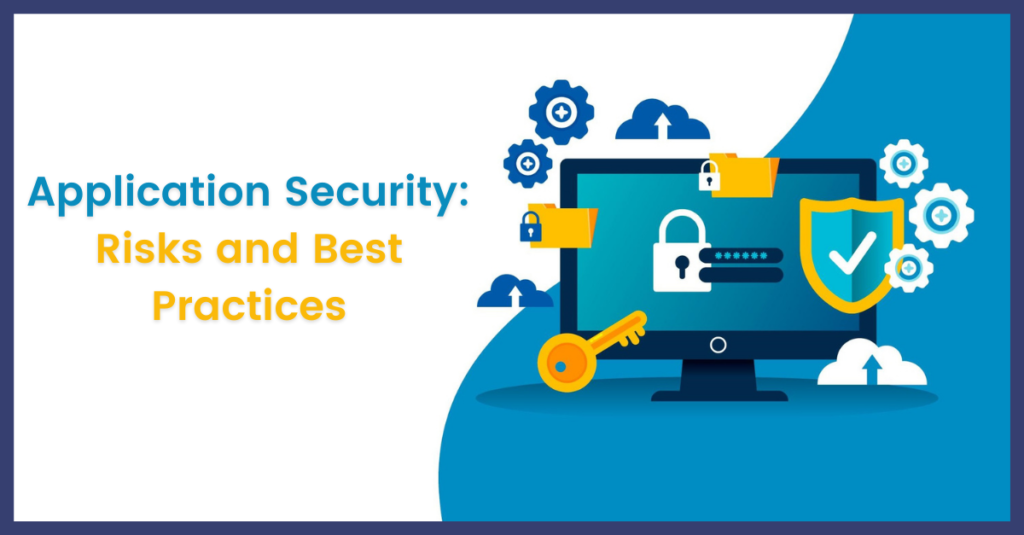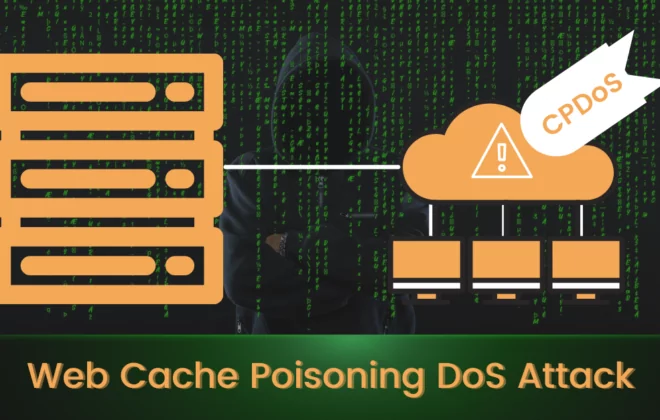Application Security: Risks and Best Practices

Applications play a crucial role in our lives as we use them for various useful purposes, ranging from shopping, interacting with people, managing finances, etc. Applications hold sensitive personal information (SPI), including our credit/debit card details, personal characteristic information, addresses, and so on. This makes application security most important for organizations as well as the application users. So, you need to understand more about application security, risks associated with apps, and the best practices that can ensure appsec.
What is Application Security?
Application security (AppSec) is an integral part of application development that defines security measures at the application level to secure application code or data from being hijacked or stolen. It includes the below key components:
- security considerations during application design and development
- systems and approaches to secure apps even after they are deployed.
Application security can be defined as the process of creating, adding, and evaluating security features inside apps to avoid vulnerabilities that can be exploited by attackers. Attackers exploit vulnerabilities present in apps to launch various cybersecurity attacks such as unauthorized access to app data.
Need for Application Security
Modern applications can be accessed over various networks and are connected to the cloud. Applications users can access these apps from anywhere, anytime, which exposes them to numerous types of security threats. Organizations developing applications must provide security at not only the network level but also the application level (within apps). Attackers are targeting applications more than ever so ensuring application security is very important.
Since unsecure apps pose serious security threats to organizations, organizations must understand the need for application security and implement necessary processes of identifying, fixing, and improving the security of apps in their design, development, and post-deployment stages. AppSec testing can help organizations to identify weaknesses/vulnerabilities within their apps so that they can fix those vulnerabilities to avoid cyberattacks.
Major Risks to Applications
Modern applications are more vulnerable to security threats because of their complexity and dependence on third-party libraries. Most attacks on apps happen due to application vulnerability exploitation. While using external libraries, developers must pay close attention to security considerations to ensure the apps developed by them are secure. For this, developers must be aware of the most common AppSec risks that make application code unsecure. OWASP has listed the top security risks to applications that developers must be careful about in order to produce secure application code. The most common security risks identified by OWASP that affect apps and APIs are mentioned below:
- Utilizing components that have known vulnerabilities: To provide required functionality and avoid excess work, developers often use third-party frameworks, libraries, and other software modules while developing their apps. Attackers always exploit the known vulnerabilities present in these third-party components to launch attacks on applications.
- Data leaks and exposure: Attackers can steal or modify poorly protected data from web apps that cannot protect sensitive data properly. They can perform malicious activities, including identity theft, credit card fraud, etc. Badly coded and improperly configured APIs can result in data exposure or data breaches.
- Weak backend access controls: When proper restrictions are not imposed on the actions that authenticated users can perform, it results in weak backend access controls. Attackers can exploit weak backend access controls to perform unauthorized actions such as viewing sensitive files, accessing other user accounts, modifying access rights, and changing other user data.
- Injection: Injection attacks exploit flaws in SQL, LDAP, NoSQL, and OS configurations. Sending untrusted data to a code interpreter using a form input method may cause an injection attack. Attackers use this untrusted data to make the interpreter execute malicious commands or allow unauthorized data access.
- Security misconfiguration: Security misconfiguration is the most common problem that occurs due to misconfigured HTTP headers, unsecure default configurations, ad hoc configurations, etc. To stay secure from cyberattacks, it is important to configure OS, libraries, apps, and frameworks securely as well as patch them regularly.
- Broken authentication and authorization: Broken authentication and authorization occur mainly due to improper implementation of application functions related to authentication and session management. This security risk allows attackers to steal session tokens or keys and compromise passwords. They can then compromise the entire system using the hijacked admin or user accounts.
- Cross-site scripting (XSS): XSS flaws are caused if untrusted data is provided to a new webpage of an app without validating it properly. Also, these flaws can occur when an existing webpage having user-supplied data is updated by an application through a JavaScript-creating browser API or HTML API. Attackers exploit XSS flaws to perform various malicious actions, including executing scripts in a browser to hijack user sessions, redirecting users to malicious websites, and defacing websites.
- Unsecure deserialization: Unsecure deserialization can lead to remote code execution. It occurs due to improper conversion of serialized data into objects that can be used by apps. Attackers can abuse this flaw to perform the injection, replay, and privilege escalation attacks.
- Insufficient logging and monitoring: In the absence of proper logging and monitoring, threats cannot be detected timely, which allows attackers to extract, modify, or delete data as well as launch further attacks.
- SSRF or Server-Side Request Forgery: As per the data, the incident rate is low as compared to the average testing rate for the Exploit and Impact potential. This category is a representation where the members will be explaining the important factors even though they might not be mentioned in the data.
- Insecure Design: It is a new category that is added in the year 2021. Insecure designs mostly focus on the issues associated with designing defects. To move ahead in the industry, design principles & patterns, reference infrastructure, and threat modeling are what one needs to work on. An insecure design cannot be repaired by a perfect architecture integration but it requires proper security control to defend against the attacks.
Application Security (AppSec) Best Practices
Since applications are widely used for various purposes, organizations developing applications must ensure that their apps are secure enough to defend against various cybersecurity threats and risks. This is possible when they implement all the security considerations/best practices in the software development lifecycle (SDLC). Some application security best practices are mentioned below:
- Implement the principle of least privilege: Organizations must implement the principle of least privileges for their employees across their corporate environment. The principle of least privileges ensures that all employees get only those permissions that are required for them to perform their duties, eliminating the risk of sensitive data leakage or account abuse.
- Regularly scan for vulnerabilities: While developing software, developers tend to use many external libraries from open-source projects for the ease of the development work. These open-source libraries may have known vulnerabilities which will make the applications vulnerable to various attacks. Therefore, scanning these dependencies regularly is required to identify and fix vulnerabilities for securing the apps.
- Adopt automated testing: Testing software in the SDLC manually takes a lot of time and effort which may result in overlooking some security flaws. However, if organizations adopt automated testing from the early stage of the SDLC, security flaws and vulnerabilities can be detected and fixed precisely and early.
- Use Runtime Application Self-Protection (RASP) solutions: Network traffic to apps, containers, and serverless architecture must be monitored by using RASP solutions because these solutions can detect attacks in real-time. With the help of RASP solutions, development teams can inspect all kinds of network traffic, including malicious traffic that indicates XSS, bots, SQL Injection, bots, etc.
- Have a Secure SDLC management process in place: Implement an SSDLC management process to ensure security is integrated into every phase of the SDLC, from the beginning till the end. Having an SSDLC management process helps organizations to
- Ensure apps are developed and maintained by security-trained developers.
- Ensure apps are developed in a secure environment.
- Ensure apps are delivered to customers securely.
- Adopt a DevSecOps approach: Adopting a DevSecOps approach will help organizations to identify security holes and fix them promptly, from the early stages of software development. With DevSecOps, development teams can detect security issues in every stage of the software supply chain.
- Perform risk assessment and penetration testing: Risk assessments help organizations to detect their threat landscape, attack vectors, vulnerabilities, etc. This helps them to take preventive actions and secure the application infrastructure. Similarly, penetration testing allows organizations to know how well their security controls can defend against actual attacks by mocking them. Security exercises like risk assessment, vulnerability assessment, and pen-testing help enterprises to strengthen their security posture owing to the ever-evolving threats.
- Adopt automation for vulnerability management: Vulnerability management is easier with the use of automated tools for organizations. It helps organizations to fix security issues early and save costs. Developers can use static application security testing (SAST) and dynamic application security testing (DAST) tools for identifying vulnerabilities in application code.
- Ensure proper input validation: Proper input validation is the key to avoid many attacks like XSS and SQL Injection. Ensure that all input data is correct semantically and syntactically. Validate the input data for length to ensure the data contains the expected number of characters and digits.
- Encrypt your data: Encrypting data (both at rest and in transit) is essential to ensure web application security. You can use an SSL with the latest certificate as part of basic encryption. To secure sensitive data that is exchanged over the application and prevent MITM attacks, use the strongest encryption algorithms.
- Manage containers properly: Organizations must ensure that their containers are signed with any digital signature tool to keep them secure. For open-source vulnerabilities, they should run automatic scans so that the use of containers can be secured throughout the common integration pipeline.
- Update and patch software regularly: The most effective way to protect software products against cyberattacks is to keep them updated and patched. Updating and patching them will close the security loopholes timely before they are exploited by attackers.
- Have a bounty program: Many expert security professionals do not work full time for organizations. Instead, they opt for working as freelancers. Organizations must have a bounty program to utilize such expert talents available outside their enterprises. By having a bounty program, organizations can identify security flaws from an attacker’s perspective and rectify them before they are actually exploited by attackers.
While application developers are liable for providing secure applications, application users must also understand the responsibility of using apps wisely and safely. They must avoid storing unnecessary sensitive information, practice due diligence, and be aware of new cyber threats that could affect them.
References
https://www.vmware.com/topics/glossary/content/application-security
https://www.trendmicro.com/vinfo/us/security/news/virtualization-and-cloud/application-security-101
https://snyk.io/learn/application-security-best-practices/
https://www.whitesourcesoftware.com/resources/blog/application-security-best-practices/
https://www.acunetix.com/blog/web-security-zone/7-web-application-security-best-practices/
Author,
Mustafa Ahmed,
Varutra Consulting Pvt. Ltd.




